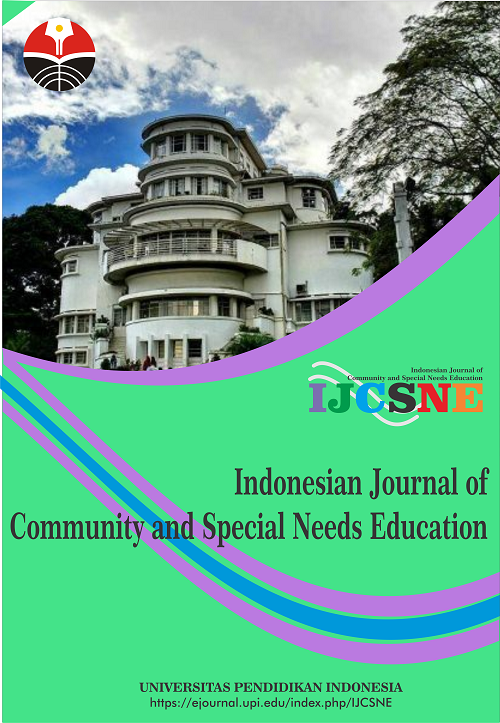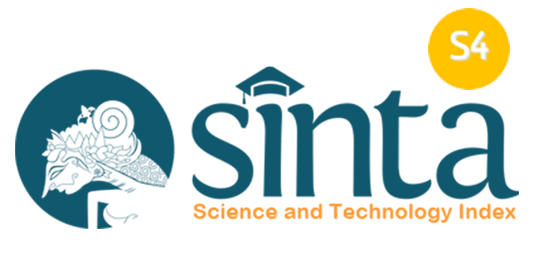Availability and Utilization of Assistive Technology for Learning among Students with Special Needs in Ilorin, Kwara State
Abstract
The availability and use of technological devices to aid students with special needs in education and training are driven by the changing nature of work. This study investigated the Availability and Utilization of Assistive Technology for Learning among Students with Special Needs in Ilorin, Kwara State. A descriptive research design of survey type was employed for this study. Multi-stage sampling techniques of simple random sampling and purposive sampling were used to select 100 respondents for the study. The questionnaire was used for the study. Descriptive and Inferential statistics were used to answer the research question and test the stated hypotheses with the aid of statistical product and service solution (SPSS) version 20.0 at a 0.05 level of significance. The findings from this study showed that assistive Technology devices are available for assimilation of students with special needs in Ilorin, Kwara and there is no significant influence in the utilization of assistive technology for students of special needs based on the gender of the students. It was recommended that the Government should provide adequate funding to improve the availability of assistive technology.
Keywords
Full Text:
PDFReferences
Alnahdi, G. (2014). Assistive Technology in Special Education and the Universal Design for Learning. Turkish Online Journal of Educational Technology-TOJET, 13(2), 18-23.
Causton‐Theoharis, J. N., Theoharis, G. T., & Trezek, B. J. (2008). Teaching pre‐service teachers to design inclusive instruction: A lesson planning template. International Journal of Inclusive Education, 12(4), 381-399.
Copley, J., & Ziviani, J. (2004). Barriers to the use of assistive technology for children with multiple disabilities. Occupational Therapy International, 11(4), 229-243.
Bryant, B. R., & Seay, P. C. (1998). The technology-related assistance to individuals with disabilities act: Relevance to individuals with learning disabilities and their advocates. Journal of Learning Disabilities, 31(1), 4-15.
Nkechi, C. M. (2013). Education of the disabled in Nigeria: Access and perception. Educația Plus, 9(1), 133-142.
Okazaki V. & Renda D. S. (2012). Assistive technology issues for students with disabilities and university staff who work with them. Proceedings of the Higher Education Research and Development Society of Australasia (HERDSA) Conference, Melbourne, Australia.
Opini, B. M. (2010). A review of the participation of disabled persons in the labour force: The Kenyan context. Disability & Society, 25(3), 271-287.
Ministry of Education (2012). Taskforce on the Re-alignment of the Education Sector to the Constitution of Kenya 2010 Report: Towards globally competitive quality education for sustainable development. Kampala, Uganda.
Mull, C. A., & Sitlington, P. L. (2003). The role of technology in the transition to postsecondary education of students with learning disabilities: A review of the literature. The Journal of Special Education, 37(1), 26-32.
Nabasa S. (2004). Challenges faced by teachers in teaching learners with autism in Inclusive classes in Bushenyi and Mushunga Primary School. MOE.
Reed & Bowser (2005). Etymology dictionary. Retrieved from: http://dictionary.reference.com/. New York, USA: Random House, Inc.
Stodden, R. A., Conway, M. A., & Chang, K. B. (2003). Findings from the study of transition, technology and postsecondary supports for youth with disabilities: Implications for secondary school educators. Journal of Special Education Technology, 18(4), 29-44.
Shikden, (2012). A global text: Educational psychology (second edition). Zurich, Switzerland.
Wehmeyer, M. L., Palmer, S. B., Smith, S. J., Davies, D. K., & Stock, S. (2008). The efficacy of technology use by people with intellectual disability: A single-subject design meta-analysis. Journal of Special Education Technology, 23(3), 21-30.
Yusuf, M. O., Fakomogbon, M. A., & Issa, A. I. (2012). Availability of assistive technologies in Nigerian educational institutions. International Journal of Social Sciences & Education, 2(1), 44-51.
DOI: https://doi.org/10.17509/ijcsne.v2i1.37916
Refbacks
- There are currently no refbacks.
Copyright (c) 1970 Universitas Pendidikan Indonesia

This work is licensed under a Creative Commons Attribution-ShareAlike 4.0 International License.















